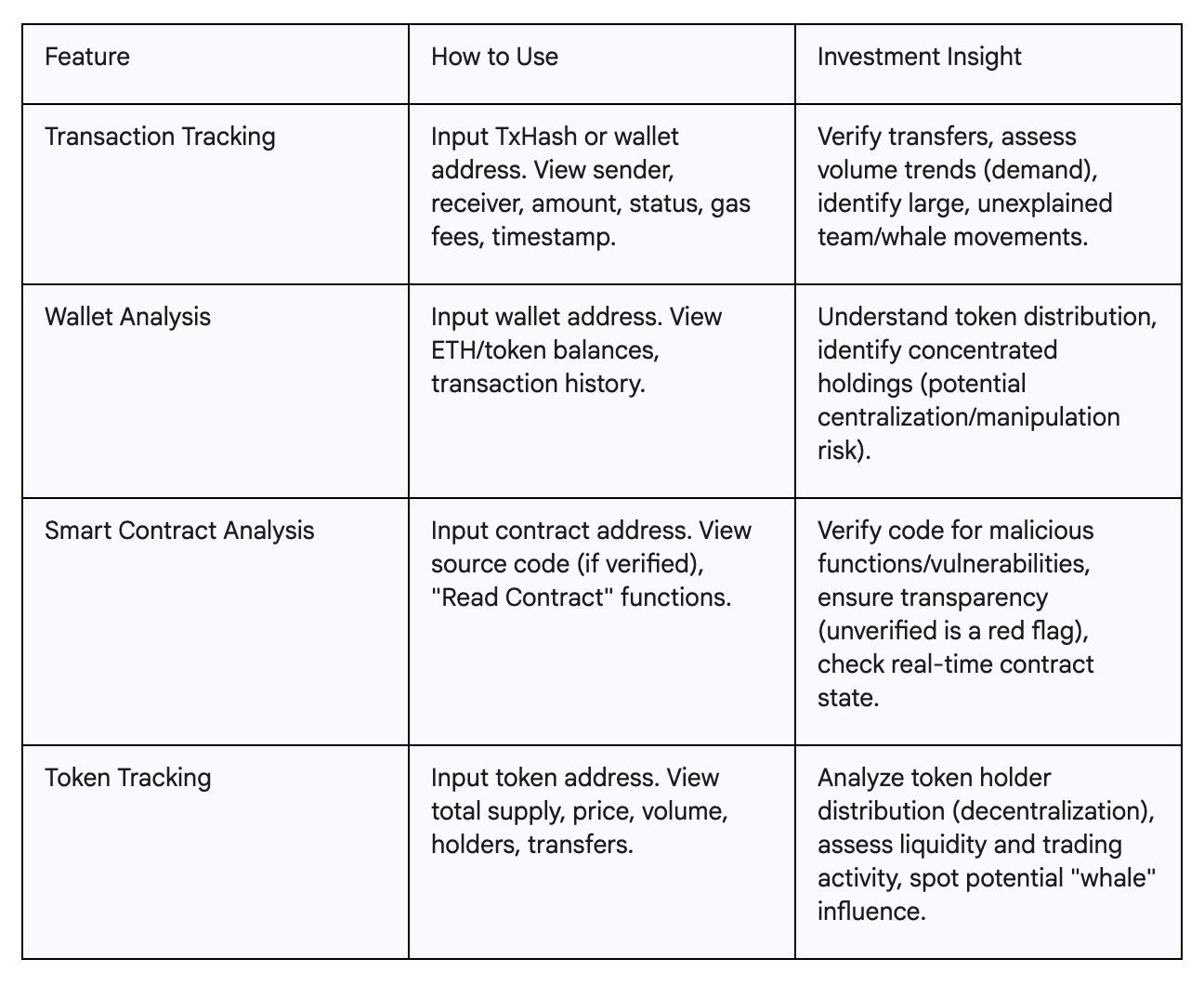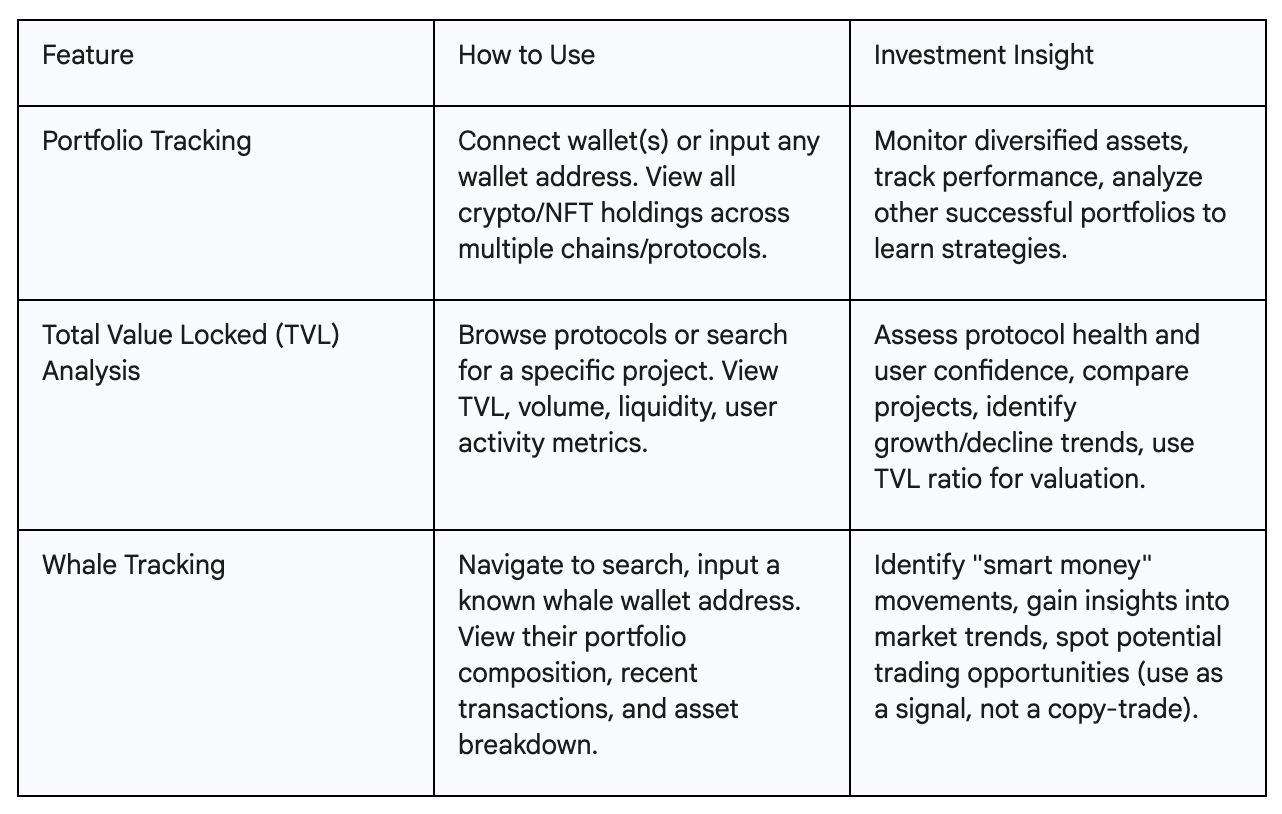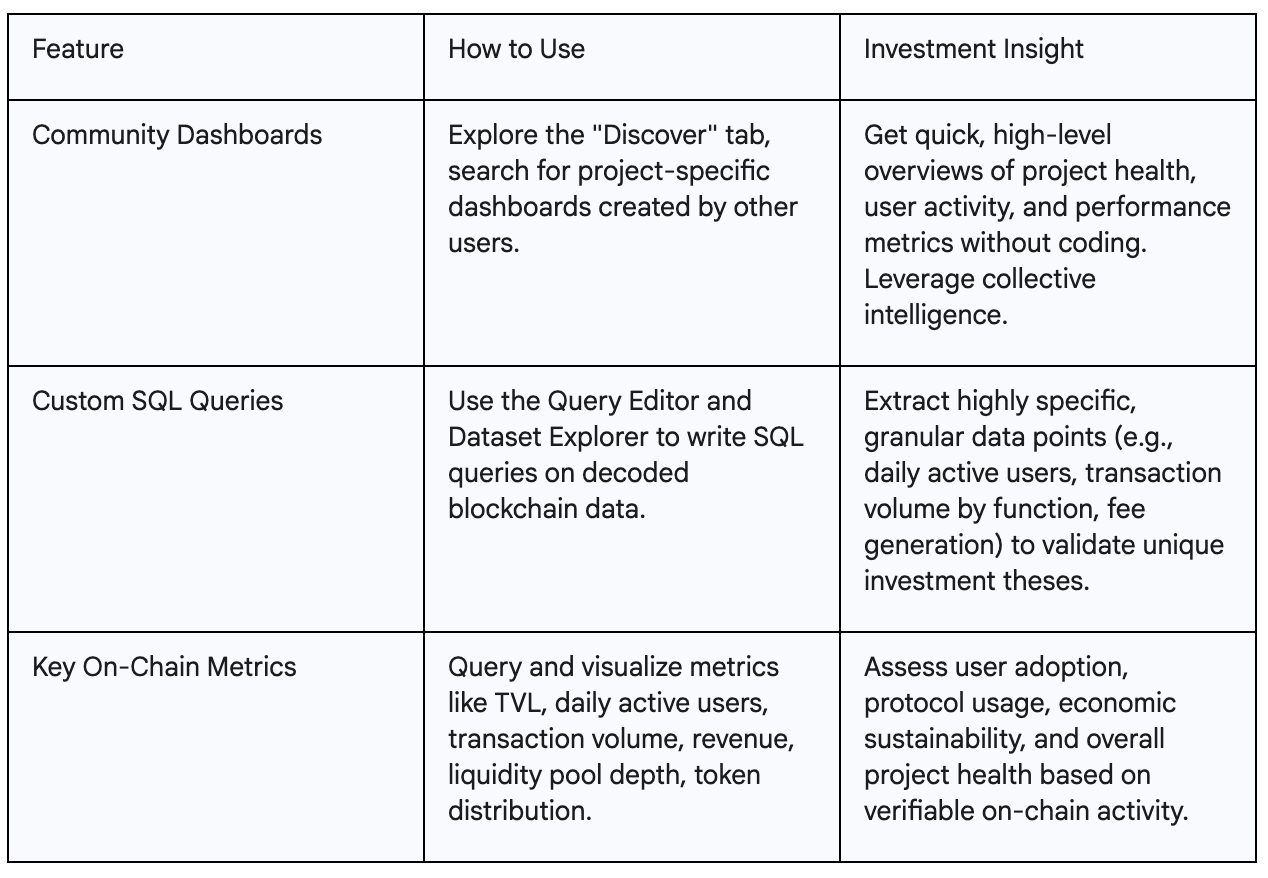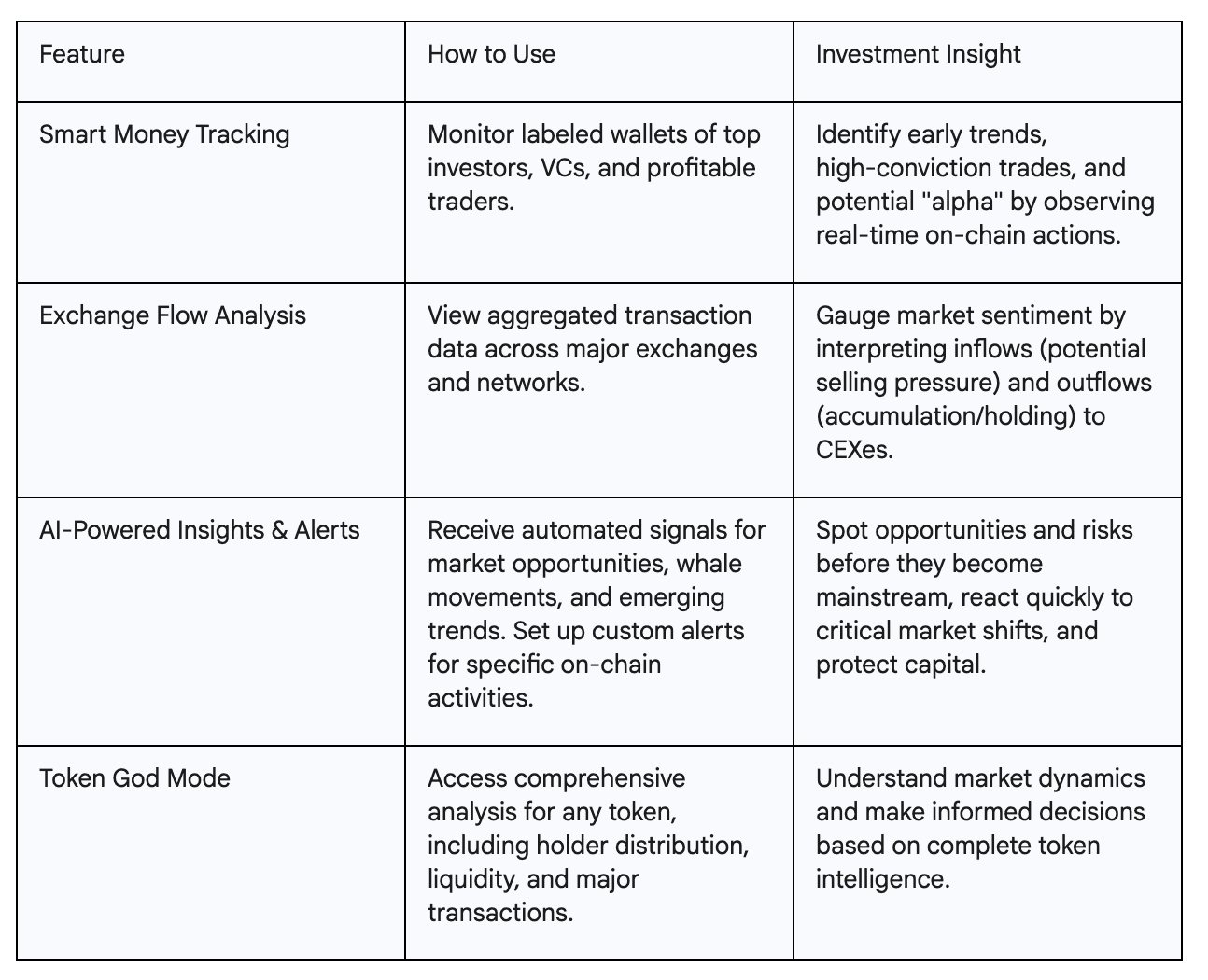DYOR in DeFi: How to Research Like a Pro
In DeFi, the upside can be huge-but so can the risks. There's no safety net, no "call your bank" button, and definitely no undo when a scammer rug-pulls your funds. That's why DYOR-Do Your Own Research-isn't just advice, it's survival.
The good news? Blockchain is an open book, and tools like Etherscan, DeBank, Dune, and Nansen turn that raw data into clear, actionable insights. In this guide, we'll show you how to use them to spot opportunities, dodge scams, and trade with confidence.
DYOR Basics: How to Read Between the Hype and the Data in DeFi
Smart investing in DeFi means looking beyond moon emojis and big promises. DYOR-Do Your Own Research-works best when you blend qualitative gut checks with quantitative hard facts.
The Qualitative Side
Start with the story: What's the project actually for? Does the whitepaper make sense-or is it just tech buzzwords strung together? Who's behind it, and are they credible? Lurk in their Discord, Telegram, and X (Twitter) to see if the community's genuinely engaged or just bots shouting "wen Lambo." Anonymous team? That's a yellow flag-maybe even a red one.
The Quantitative Side
Then look at the numbers. Market cap, token supply, liquidity, transaction volume, whale movements-these all tell you what's actually happening on-chain. But don't get blinded by a single stat. A huge TVL (Total Value Locked) is meaningless if there's no real use case or active team behind it.
The trick? Combine both views. The numbers give you the heartbeat. The narrative tells you if it's worth keeping alive in your portfolio. Together, they're your best shot at cutting through the noise and spotting the real gems.
Avoiding Common DeFi Traps: How Not to Wreck Your Portfolio
Even with the sharpest tools and the best on-chain data, your own brain can trip you up. DeFi moves fast, markets swing wildly, and hype spreads quicker than facts-making it dangerously easy to get caught out.
Classic Pitfalls to Dodge:
-
No Plan, Just Vibes: Trading on gut feelings is a shortcut to fear-driven, FOMO-fuelled mistakes.
-
Ignoring Risk Management: Impermanent loss, dodgy security, and low liquidity can quietly drain profits.
-
Chasing Crazy APYs: Sky-high yields often collapse after the hype-always check how they're actually generated.
-
All Eggs in One Basket: A single protocol blow-up can wipe you out. Diversify.
-
Overlooking Fees: Gas, protocol fees, and "hidden" costs eat into returns faster than you think.
-
Following the Herd: Buzz ≠ value. Research first, ape in later (if at all).
The Sneaky Psychological Biases:
Your brain loves shortcuts-but in DeFi, they can be deadly.
-
Herding: If everyone's doing it, it must be good... right? (Wrong.)
-
Overconfidence: Thinking you can outsmart the market every time.
-
Confirmation Bias: Only believing data that supports your hunch.
-
Loss Aversion: Holding losers to avoid feeling the pain.
-
Gambler's Fallacy: Thinking "it's due" after a losing streak.
-
FOMO: The biggest bias of them all-fear of missing "the next big thing."
The fix? Build self-awareness into your DYOR process. Spot your own patterns. Call out your biases. And remember-sometimes the smartest move is doing nothing until you're sure.
DYOR Is Never Done: Why Continuous Research Wins
DeFi doesn't stand still-protocols upgrade, competitors appear, bugs get patched (or exploited), and market sentiment flips overnight. Doing your own research isn't a "once and done" checklist-it's an ongoing discipline.
Stay on top by:
-
Regularly re-checking your investment thesis.
-
Using real-time monitoring tools to track changes.
-
Staying plugged into credible news and community updates.
-
Adjusting your strategy when the facts change.
In DeFi, yesterday's research can be useless tomorrow. The traders who win long-term aren't just good at spotting opportunities-they're relentless about keeping their info fresh and their strategy flexible.
Etherscan: Your Front-Row Seat to Ethereum's Ledger
If Ethereum is an open book, Etherscan is the search engine that lets you read every page. It's not a wallet, doesn't hold funds, and won't make trades for you-it's your window into every transaction, wallet, and smart contract on the network.
With Etherscan, you can:
-
Track transactions: Paste a TxID and see who sent what, where it went, gas fees, timestamps, and status. Great for checking whether that "token burn" really happened or if the team just said it did.
-
Check wallets: See balances, token holdings, NFTs, and full transaction history. The Holders tab shows how concentrated a token's supply is-if a handful of wallets own most of it, that's a red flag for manipulation risk.
-
Review smart contracts: Verified contracts let you read the code, spot any shady functions, and check live data like pool balances or staking participants. No verification? That's a big trust gap.
-
Track tokens: See distribution, whale activity, and liquidity. Low liquidity means big trades can move the market-and trap you in a bad position.
Why it matters:
Etherscan isn't just about confirming a transaction-it's the foundation of real DeFi due diligence. It lets you fact-check project claims against the blockchain's immutable record, uncover suspicious moves, and assess whether a project's activity matches its hype.
A verified contract on Etherscan is a trust signal. Without it, you're betting blind. With it, the whole community can act as a decentralized audit team-and that's how DeFi stays honest.
Etherscan: Key Features & Investment Insights

DeBank: Your Multi-Chain Portfolio & Whale Radar
DeBank is like mission control for your DeFi life. It pulls all your assets-across chains, wallets, and protocols-into one clean dashboard. You can track performance, swap assets, compare projects, and even snoop (legally) on other wallets to see how the pros are moving their capital.
How to Use DeBank for Smarter DYOR
-
Portfolio Tracking
Drop in any wallet address and get an instant overview-assets, tokens, protocols, and activity. Perfect for tracking your own positions or studying how experienced traders spread risk across chains. In a fragmented DeFi world, DeBank saves you from juggling ten different explorers and dashboards. -
TVL Analysis (Handle With Care)
DeBank makes it easy to check a project's Total Value Locked (TVL)-a quick snapshot of how much capital is parked in a protocol.
-
Upward, steady TVL: Signals growth and adoption. -
Sudden drops: Possible security issue or loss of confidence.
You can also use the TVL ratio (Market Cap ÷ TVL) to get a rough idea of value-below 1 often means undervalued. But beware: TVL isn't perfect. Projects can inflate numbers, methods vary across aggregators, and raw figures can mislead without context. Always cross-check with user activity and transaction volume before making a call.
- Whale Watching
This is where DeBank gets fun. Plug in a whale's address and you'll see their portfolio breakdown, recent trades, and protocol allocations. Large moves from big players can hint at upcoming market shifts or rising narratives. But-don't just copy-paste their trades. Whales have different risk appetites and may be running complex plays you can't see. Use it as a signal, not a script.
Why It Matters
DeBank takes the chaos of multi-chain DeFi and makes it navigable. It's an all-in-one research hub where you can track your exposure, size up projects, and watch market movers in real time-without having to guess what's really going on across the chains.
DeBank: Key Features & Investment Insights

Dune Analytics: Custom On-Chain Intel, Your Way
Dune is like the Bloomberg Terminal of DeFi-if Bloomberg let you build the charts yourself and share them with the world. It takes raw blockchain data, decodes it, and turns it into clear, customizable dashboards you can read at a glance. Best part? It's open-source, community-driven, and supports multiple chains like Ethereum, Polygon, Optimism, BSC, and Solana.
How to Use Dune for Smarter DYOR
-
Tap Into Community Dashboards
Head to the Discover tab and you'll find dashboards built by Dune's "wizards"-analysts who've already done the heavy lifting on DeFi, dApps, NFTs, and more. You can fork, tweak, and repurpose their work to suit your own research. It's like plugging into the collective brainpower of the on-chain analytics community-no SQL skills required. -
Build Custom Queries
When you want specific answers-say, the daily volume of a single Uniswap pool or governance activity for a DAO-you can build your own dashboard in Dune's Query Editor. Using decoded contract tables and community "abstractions," you can pull exactly the metrics you care about:
-
Daily/Monthly Active Users - Track unique wallet interactions over time.
-
Transaction Volume - Measure economic activity tied to a protocol.
-
Revenue/Fee Generation - See if a protocol is actually making money.
-
Liquidity Pool Depth - Check trade impact and slippage risk.
-
Granular TVL - Drill down by pool, asset, or contract type.
-
Token Distribution - Spot whales and centralization trends.
-
Governance Participation - See who's voting and how often.
- Read Between the Numbers
-
High TVL - Often a trust signal, but verify it's not inflated.
-
Rising Active Users - Suggests growing adoption.
-
Sustained Volume - Shows real demand.
-
Revenue Generation - Strong indicator of long-term viability.
Why It Matters
Dune gives you the power to move beyond surface-level metrics. Instead of relying on pre-packaged data, you can create tailored, highly specific insights that match your thesis-and share them with others. It's the ultimate on-chain sandbox for serious DeFi research.
Dune Analytics: Key Features & Investment Insights

Nansen: Tracking Smart Money & Reading the Market's Mood
Nansen takes blockchain data and adds the one thing raw numbers can't give you-context. It labels millions of wallets ("Smart Money," "VCs," exchanges, and more) so you know who's making the moves, not just that money is moving. That means you can see where the best-connected, most profitable players are putting their capital-and act before the rest of the market catches on.
How to Use Nansen for Smarter DYOR
-
Smart Money Tracking
Nansen's flagship feature shows what high-performing wallets-whales, VCs, and top traders-are buying, selling, and holding right now. Spotting their early entries can surface trends, high-conviction plays, and alpha before it's widely visible. Just don't treat it as a "copy trade" machine-these players have different risk appetites and strategies. -
Exchange Flow Analysis
The Exchange Flow dashboard tracks token movement between wallets and exchanges:
-
Big inflows to CEXs → Often signals upcoming sell pressure.
-
Large outflows to wallets → Usually means accumulation or long-term holding.
Reading these flows can help you front-run market sentiment shifts.
- AI-Powered Insights & Smart Alerts
Nansen's AI flags unusual transactions, whale activity, and new trends as they happen-no endless manual scanning required. You can set Smart Alerts for:
-
Whale wallet movements
-
Big liquidity changes in protocols
-
Liquidation risks in lending markets
Some users credit these alerts with saving them millions by getting out before a protocol imploded.
-
Token God Mode
Get a 360° breakdown of any token-holder distribution, liquidity depth, token flows, and major transactions. It's like a health check for both the token's fundamentals and its market activity. -
Market Sentiment (xAI Analysis)
This feature blends on-chain data with social chatter from Smart Money wallets, influencers, and curated accounts. You see not just what's happening on-chain, but how the market feels about it-vital context for timing entries and exits.
Why It Matters
Nansen turns blockchain noise into market intelligence you can act on. With wallet labels, AI-driven alerts, and sentiment tracking, it's one of the fastest ways to spot opportunity - or trouble - before it hits the headlines.
Nansen: Key Features & Investment Insights

Pulling It All Together: Building a 360° View of a Project
Each tool: Etherscan, DeBank, Dune, and Nansen has its own superpower. On their own, they're useful. Combined, they're a game-changing toolkit.
-
Etherscan: Your microscope for raw blockchain data-down to the transaction hash and smart contract code.
-
DeBank: Your command center for multi-chain portfolio tracking, TVL trends, and whale activity.
-
Dune: Your custom lab for building dashboards that answer your specific questions.
-
Nansen: Your early-warning radar for Smart Money flows and shifting market sentiment.
When you cross-reference them, you start getting the full picture. Example:
-
DeBank shows a protocol's TVL trending up.
-
Dune confirms daily active users are growing.
-
Nansen shows Smart Money wallets are buying in.
-
Etherscan verifies the smart contract is clean and audited.
Now you're not just looking at numbers-you're validating them from multiple angles.
Don't Skip the Off-Chain Checks
On-chain data is powerful, but it's not the whole story. You still need to dig into:
-
Whitepaper - Clear vision, realistic roadmap, sound tokenomics.
-
Team - Proven experience and a transparent track record.
-
Audits - Independent reviews of the code.
-
Community - Genuine engagement on X, Discord, and Telegram.
The trick is to let on-chain data verify the claims you find off-chain. If a project says it has "mass adoption," you should be able to see that in active wallet counts, transaction volume, and liquidity growth.
Conclusion: Owning Your DeFi Journey
DeFi is bursting with opportunity-but it's also full of traps for anyone flying blind. Doing Your Own Research (DYOR) isn't a nice-to-have-it's survival. And it's not something you "finish." It's a cycle: dig into the data, challenge your assumptions, watch for your own biases, and keep learning as the space evolves.
The four tools we've covered are your core kit:
-
Etherscan - The raw truth of transactions, wallets, and smart contracts.
-
DeBank - A big-picture, multi-chain view of portfolios, TVL, and whale moves.
-
Dune - Custom dashboards for the exact metrics your thesis depends on.
-
Nansen - Context-rich wallet labels, Smart Money tracking, and real-time market sentiment.
Used together, and paired with old-school qualitative research into a project's whitepaper, team, tokenomics, audits, and community, they turn blockchain noise into real, actionable intelligence.
In DeFi, the edge belongs to those who don't just speculate-they verify. If you can cross-check the story a project tells with the reality written on-chain, you'll trade with more conviction, avoid costly traps, and position yourself to benefit from the real innovations happening in decentralized finance.

